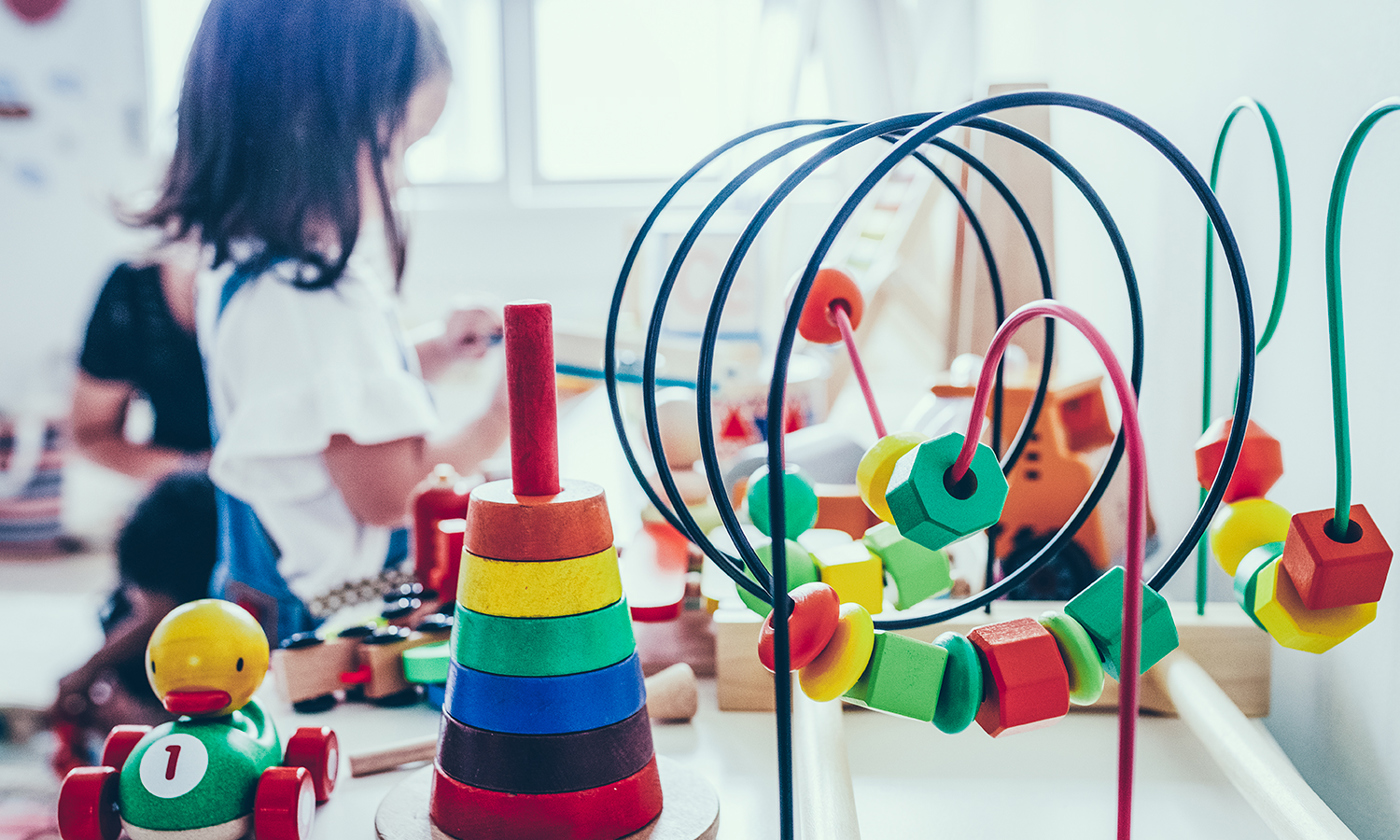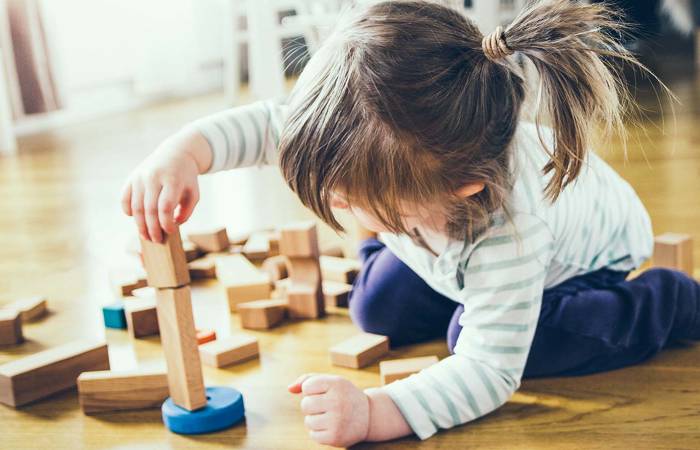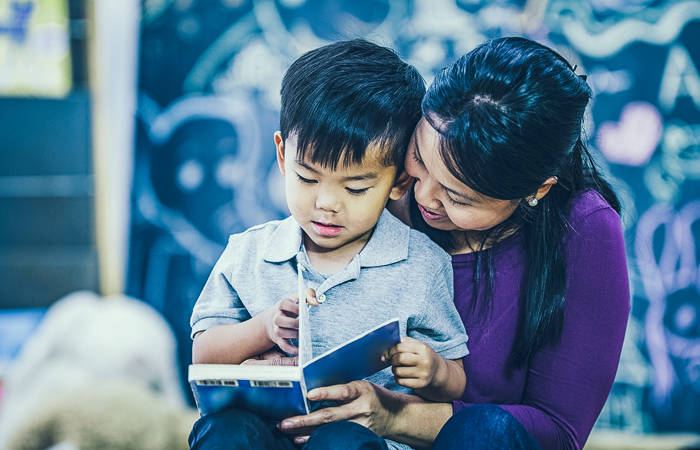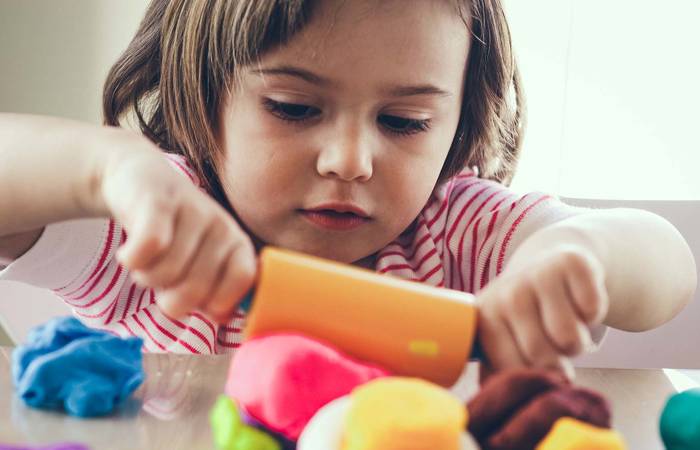Like what you see?
Sign up to receive more free parenting advice.
Thank you for subscribing to our newsletter!
Early Learning

Credit: iStock.com/Rawpixel
It’s not unusual for parents to complain that their children have too many toys – and those complaints are usually centred around the issue of clutter.
But a study by the University of Toledo in Ohio, US, found that having an abundance of toys is not a great thing in other ways: it prevents children from being as creative as they can be.
Researchers invited 36 toddlers to play in a room for 30 minutes. They were given four toys, and then they were given 16 toys. The study revealed the children were more creative when they had fewer toys and they also played with those toys for twice as long.
Lead author Dr Carly Dauch told the journal Infant Behaviour and Development that when 16 toys were made available, it seemed to interfere with duration and depth of play, as additional toys may have created a source of external distraction.
German researchers, Elke Schubert and Rainer Strick conducted experiments in the 1990s where toys were taken away from a nursery for three months. A few weeks later, children had managed to readjust their play, and became more social and creative. Their findings were published in the book The Toy-free Nursery.
Dr Yeshe Colliver from Macquarie University’s Department of Educational Studies said the question of how many toys we should be giving our children is one that many parents would think about from time to time.
“It’s easy to see that having a lot of toys provides too many distractions, and it also raises questions about the quality of the toys,” Dr Colliver says.
“If you’re giving children a small selection of toys, the studies show that it will extend the period of time in which the kids play and that is very beneficial, compared to giving them a lot of toys that becomes too distracting.
“I also think in today’s day and age another thing to consider is the number of distractions potentially in the room the child is playing in.
“For example, if a parent is on their mobile phone and receiving notifications. What they’re doing is modelling behaviour to their children. There have been some interesting studies that also looked at toy play with TV in the background, which found that toddlers were distracted from their toy play and played for shorter periods of time due to being distracted by what was happening on TV, so that’s also something to consider.”
When it comes to early childhood education and care, Dr Colliver said there’s a strong tradition of favouring “open ended” versus “closed ended materials".
“A typical closed ended toy is a puzzle, where it’s got one use; there’s only one way to put a puzzle together,” Dr Colliver says.
“You might see some children pick up a puzzle and play as a character, if there happens to be a piece that’s shaped like a character. For example, my two-year-old has a puzzle of a rocket ship and it has little pieces in the shape of astronauts and he likes to play with those.
“An open ended toy could be something like a stick, so it’s more about the child’s imagination. It can be a sword, or an umbrella, a line in the road, or a ship that you set sail on. So it provides a greater range of opportunities for the child to project their imaginative play onto.
“It’d be interesting to see a study where the focus was on the quality of the play and also how long those interactions were sustained and how many uses the child found for different objects.
“I think you’d definitely find differences between objects that just do one thing versus those that can be used in multiple ways.”
If you’re giving children a small selection of toys, the studies show that it will extend the period of time in which the kids play and that is very beneficial, compared to giving them a lot of toys that becomes too distracting.Dr Yeshe Colliver
Stay up to date with the latest news and articles from First Five Years
Thank you for subscribing to our newsletter!
Dr Colliver believes many parents feel anxious about whether they’re providing enough opportunities for their children to thrive – both in terms of play as education and play as entertainment.
“I think that’s a delicate thing to balance in many ways but possibly one creative thing to do is to keep many toys in storage and only take out certain ones at certain times,” Dr Colliver says.
“This is something that’s done in early education that works very well. So they’ll have certain toys, put together thoughtfully by educators that might indicate certain types of play or they might be used in certain ways, but they’re still very open ended toys.
“It’s about providing different ways of thinking about those same materials for children but also, because they’re open ended, its not limiting. So you can really think about which toys you want to give your child and put other toys away for another time.”
What about the parents who are constantly buying their children new toys and find it difficult to stop treating them with “shiny new things”? Dr Colliver believes too much clutter is never ideal.
“We can all accumulate too many toys and clutter is quite off putting and not very stimulating of creativity. So I’d suggest the best way for parents to deal with toys is to not have too many out at the same time. Just keep a few in the house and put the others away,” Dr Colliver says.
“It’s a good idea because you create a novelty effect of an old toy coming back into the playroom.
“You could decide to have ‘toy A, B and C’ in January but, by February they’re put away until July when they appear again with ‘toy Z and Y.’ Sometimes the children will have forgotten they even had that toy to begin with and it will feel very new again.”







